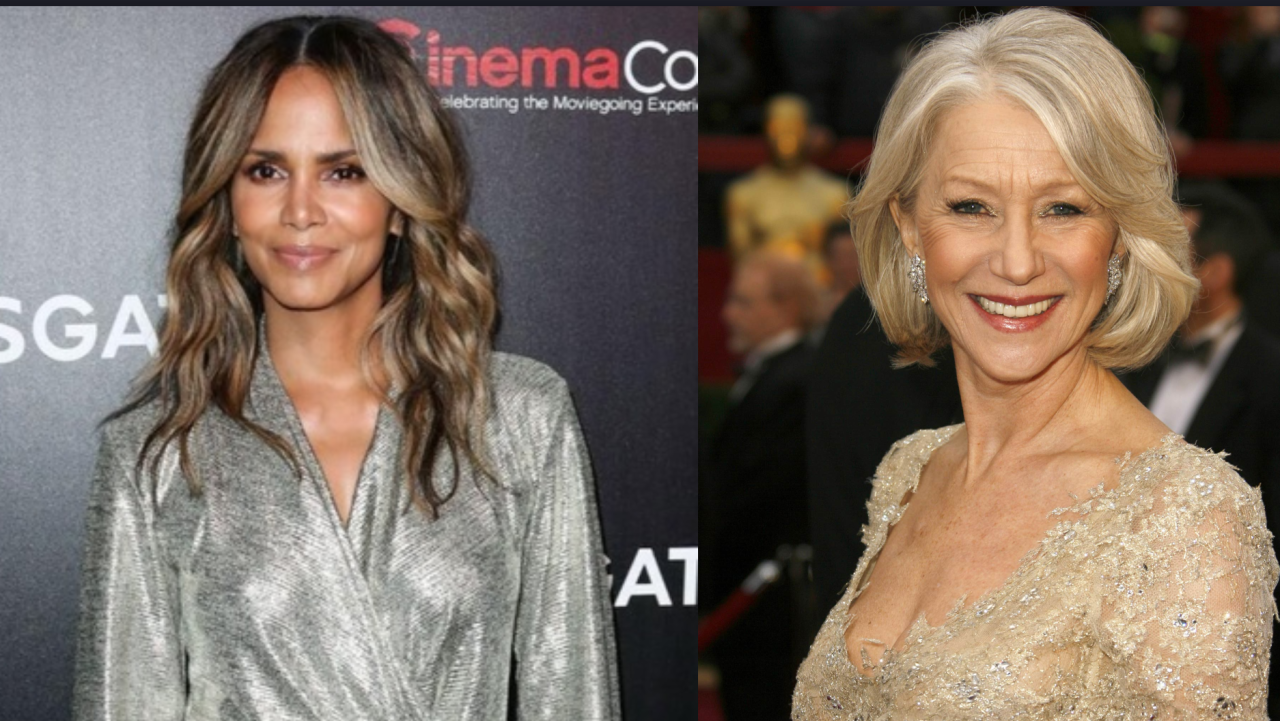Actors Who Shine in Gritty, Mature Roles: This exploration delves into the captivating world of performers who excel in portraying complex, emotionally demanding characters. We’ll examine the defining characteristics of these roles, analyzing the acting styles and career trajectories of those who masterfully embody them. From the psychological depth of the characters to the physical demands on the actors, we uncover the multifaceted nature of these powerful performances and their lasting impact.
We will investigate how societal shifts and evolving genre conventions have shaped the portrayal of gritty, mature roles over time, highlighting the influence of directors and the critical reception these performances often receive. The discussion will also consider the future of these roles in a constantly changing entertainment landscape.
Defining “Gritty, Mature Roles”
Gritty, mature roles in film and television represent a departure from idealized portrayals. These characters are complex, flawed individuals often grappling with morally ambiguous situations and internal conflicts. They possess a depth and realism rarely seen in more straightforward heroic or villainous archetypes. Their stories explore the darker aspects of the human condition, showcasing vulnerability, resilience, and the consequences of choices.
The defining characteristics of gritty, mature roles are multifaceted. These roles often involve characters with troubled pasts, deep-seated psychological issues, or significant moral failings. They navigate challenging circumstances, making difficult decisions with lasting repercussions. The narratives surrounding them are typically realistic and unflinching, avoiding simplistic resolutions or convenient plot devices. Authenticity in portrayal is paramount; these characters are relatable precisely because of their imperfections and struggles.
Examples of Gritty, Mature Roles in Film and Television
Several films and television shows exemplify the concept of gritty, mature roles. For instance, the character of Walter White in *Breaking Bad* showcases a gradual descent into criminality, driven by a complex mix of ego, fear, and financial desperation. His transformation from a mild-mannered chemistry teacher to a ruthless drug kingpin is a compelling exploration of human fallibility. Similarly, the anti-hero Don Draper in *Mad Men* embodies the complexities of the American Dream, grappling with personal demons and societal expectations in the backdrop of 1960s advertising. His carefully constructed facade masks a deep-seated insecurity and profound emotional emptiness, making him a compelling and deeply flawed character. In contrast, the character of Omar Little in *The Wire* offers a different perspective; a gay armed robber who operates by a strict moral code, despite existing outside the conventional law. His defiance and loyalty within a brutal environment underscore the resilience and moral ambiguity that define such roles.
Categorization System for Gritty, Mature Roles
A categorization system for gritty, mature roles can be developed based on three key dimensions: character traits, plotlines, and thematic elements.
Character traits can be categorized along spectrums: moral ambiguity (heroic to villainous), psychological stability (stable to deeply disturbed), and social standing (privileged to marginalized). Plotlines can be categorized by the central conflict: internal conflict (psychological struggle), external conflict (struggle against society or other characters), or a combination of both. Thematic elements can be categorized by the overarching themes explored: redemption, morality, justice, societal critique, trauma, and existentialism. By considering these three dimensions, a comprehensive framework for analyzing and understanding the diversity of gritty, mature roles can be established. For example, Walter White (Breaking Bad) might be categorized as morally ambiguous (initially more heroic, then definitively villainous), psychologically unstable (increasingly paranoid and ruthless), with a middle-class social standing; his plotline focuses on both internal conflict (his self-justification and descent into madness) and external conflict (his struggles against rival drug cartels and law enforcement); and the thematic elements include morality, consequences of choices, and the corrosive nature of power.
Actors Known for Gritty, Mature Performances
The world of acting boasts a diverse range of talent, but some performers excel in portraying characters with depth, complexity, and a certain lived-in quality. These are the actors who truly shine in gritty, mature roles, bringing a nuanced understanding of human frailty and resilience to the screen. Their performances often transcend the script, leaving a lasting impact on the audience.
Several factors contribute to an actor’s success in these demanding roles. A deep understanding of human psychology is essential, allowing them to portray believable characters grappling with moral ambiguity, trauma, or difficult life choices. A strong command of physicality and vocal expression is also crucial, conveying the character’s emotional and physical state convincingly. Finally, the actor must possess a willingness to take risks and explore the darker aspects of human nature, pushing their own boundaries to deliver a compelling performance.
Ten Actors Renowned for Gritty, Mature Performances
The following list represents a selection of actors known for their consistently powerful portrayals in gritty, mature roles. This is not an exhaustive list, but rather a representation of diverse talent across various acting styles and mediums.
- Robert De Niro: Known for his method acting and intense portrayals in films like Taxi Driver and Raging Bull.
- Al Pacino: Celebrated for his powerful performances in Scarface and Dog Day Afternoon, showcasing a wide emotional range.
- Meryl Streep: Her versatility extends to gritty roles like that in Sophie’s Choice, demonstrating emotional depth and resilience.
- Joaquin Phoenix: His transformative performances, as seen in Joker, showcase his ability to inhabit complex and troubled characters.
- Cate Blanchett: A master of character work, Blanchett’s roles in films like Carol and Blue Jasmine showcase her range and depth.
- Daniel Day-Lewis: Known for his immersive method acting and transformative performances in films like There Will Be Blood and Lincoln.
- Viola Davis: Her powerful portrayals, particularly in Fences and How to Get Away with Murder, demonstrate strength, vulnerability, and complexity.
- Gary Oldman: A chameleon-like actor, Oldman delivers captivating performances in roles ranging from Sid and Nancy to Tinker Tailor Soldier Spy.
- Frances McDormand: Her nuanced performances, such as in Fargo and Nomadland, highlight her ability to portray strong, independent women.
- Bryan Cranston: His role as Walter White in Breaking Bad showcases his remarkable ability to portray a character’s moral decline with chilling accuracy.
Comparative Analysis of Three Actors’ Acting Styles, Actors Who Shine in Gritty, Mature Roles
Comparing the acting styles of Robert De Niro, Meryl Streep, and Joaquin Phoenix reveals distinct approaches to portraying gritty, mature roles. De Niro’s method acting is known for its intense immersion and physical transformation, often pushing him to his limits. Streep’s approach is characterized by meticulous research and emotional precision, allowing her to embody her characters with remarkable authenticity. Phoenix, known for his transformative physical and emotional commitment, often disappears into his roles, creating deeply unsettling and unforgettable performances.
De Niro’s strength lies in his raw intensity and physicality; however, this intensity can sometimes overshadow subtlety. Streep’s strength is her versatility and emotional range, but her performances can occasionally feel overly calculated. Phoenix’s strength lies in his complete commitment and ability to create truly disturbing and memorable characters; his weakness can be a lack of restraint, potentially making some performances overly intense.
Five Iconic Gritty, Mature Roles
This table highlights five actors and their iconic roles, showcasing the defining characteristics of their performances and their lasting impact on audiences and the industry.
| Actor | Notable Role | Defining Characteristics | Impact |
|---|---|---|---|
| Robert De Niro | Travis Bickle in Taxi Driver | Unhinged intensity, social alienation, internal turmoil | Redefined the anti-hero; influenced countless subsequent performances. |
| Meryl Streep | Sophie Zawistowska in Sophie’s Choice | Emotional depth, survivor’s guilt, haunting vulnerability | A benchmark for portraying trauma and its lasting effects. |
| Joaquin Phoenix | Arthur Fleck in Joker | Unsettling transformation, descent into madness, societal critique | Generated significant discussion on mental illness and societal pressures. |
| Viola Davis | Rose Maxson in Fences | Resilience, strength, quiet dignity in the face of adversity | Showcased the power and complexity of Black female characters. |
| Bryan Cranston | Walter White in Breaking Bad | Gradual moral decline, transformation from ordinary to extraordinary evil | A masterclass in character arc; redefined television drama. |
The Evolution of Gritty, Mature Roles in Cinema
The portrayal of gritty, mature roles in cinema has undergone a significant transformation over the decades, mirroring societal shifts and evolving artistic sensibilities. Early depictions often leaned towards stereotypical representations, while modern portrayals strive for greater nuance and complexity, reflecting a broader understanding of human experience and the complexities of morality. This evolution is not simply a matter of increased graphic content, but rather a shift in how such roles are developed, motivated, and ultimately, judged by audiences.
The evolution of gritty, mature roles is intrinsically linked to the changing social and cultural landscape. Early cinematic depictions were often constrained by censorship and societal expectations, leading to simplified or romanticized portrayals of morally ambiguous characters. As social attitudes evolved, so too did the depiction of these roles, allowing for greater exploration of complex themes such as trauma, addiction, and moral compromise. The rise of independent cinema and a more diverse range of filmmakers further contributed to this shift, offering alternative perspectives and challenging conventional narratives.
Changes in Portrayal Across Decades
The early to mid-20th century saw a prevalence of archetypal characters: the hard-boiled detective, the stoic war hero, or the femme fatale. These characters, while possessing elements of “grit,” often lacked the psychological depth and moral ambiguity that characterize modern portrayals. The post-war era saw a gradual shift towards more introspective characters, influenced by the rise of film noir and psychological thrillers. Films like *The Maltese Falcon* (1941) and *Sunset Boulevard* (1950) showcased characters wrestling with internal conflicts and moral dilemmas, albeit within the constraints of the Hays Code. The 1970s and 80s witnessed a further loosening of restrictions, leading to a rise in anti-heroes and morally grey characters in films like *Taxi Driver* (1976) and *Raging Bull* (1980), reflecting a growing societal acceptance of morally complex characters. The late 20th and early 21st centuries saw a proliferation of nuanced and complex characters in various genres, often exploring the consequences of trauma and exploring characters with deeply flawed motivations.
Reflection of Changing Social Attitudes
The portrayal of gritty, mature roles directly reflects societal changes in attitudes towards violence, sexuality, and mental health. Early depictions often avoided explicit portrayals of these themes, resorting to euphemisms and implied narratives. The rise of realism in cinema, alongside increased societal openness about these issues, led to more frank and unflinching depictions. The exploration of PTSD in films like *Apocalypse Now* (1979) and *Platoon* (1986), for example, reflected a growing societal awareness of the psychological impact of war. Similarly, the increased representation of female characters in complex, gritty roles, challenging traditional gender roles, demonstrates a shift in societal attitudes towards women’s agency and their capacity for moral ambiguity. The evolving portrayal of these characters also reflects a growing understanding of issues like addiction and mental illness, moving away from simplistic portrayals of villains and towards more empathetic representations of flawed individuals.
Timeline of Key Milestones and Performances
A timeline illustrating the evolution could highlight:
* 1930s-1940s: The rise of film noir and the hard-boiled detective archetype (Humphrey Bogart in *Casablanca*, 1942). These characters, though flawed, often operated within a clear moral framework.
* 1970s: The emergence of the anti-hero and morally ambiguous characters (Robert De Niro in *Taxi Driver*, 1976; Al Pacino in *Dog Day Afternoon*, 1975). These characters often challenged conventional notions of heroism.
* 1980s-1990s: Increased exploration of psychological trauma and the consequences of violence (Robert De Niro in *Raging Bull*, 1980; Jodie Foster in *The Silence of the Lambs*, 1991).
* 2000s-Present: A greater emphasis on nuanced characters with complex motivations and morally ambiguous choices (Daniel Day-Lewis in *There Will Be Blood*, 2007; Frances McDormand in *Fargo*, 1996). A wider range of diverse actors taking on these roles also reflects societal shifts.
Impact of Gritty, Mature Roles on Actors’ Careers
Successfully portraying gritty, mature roles can significantly alter an actor’s career trajectory, often leading to increased recognition, critical acclaim, and expanded opportunities. The ability to convincingly embody complex, flawed, and often morally ambiguous characters demonstrates a range and depth of acting skill that is highly valued in the industry. This can open doors to more substantial and challenging roles, leading to greater longevity and a more prestigious career path.
The impact of these roles is multifaceted, affecting an actor’s public image, the types of roles offered, and ultimately, their earning potential. A compelling performance in a gritty, mature role can elevate an actor from relative obscurity to widespread recognition, transforming their career prospects dramatically. Conversely, a poorly received performance or a role that misrepresents their abilities can hinder career advancement. The inherent risks and rewards are therefore significant and heavily depend on various factors, including the actor’s existing reputation, the quality of the project, and the role’s overall impact on the audience.
Career Advancement and Recognition
A successful portrayal of a gritty, mature role can catapult an actor’s career to new heights. For example, the intense and nuanced performance of Heath Ledger as the Joker in “The Dark Knight” not only earned him posthumous critical acclaim and an Oscar, but also solidified his legacy as one of the greatest actors of his generation. Similarly, Frances McDormand’s performance in “Fargo” showcased her ability to portray a complex and compelling character, propelling her to further success and cementing her reputation as a versatile and powerful actress. These performances significantly broadened their career options, attracting roles that were previously unavailable.
Risks and Rewards at Different Career Stages
The decision to accept a gritty, mature role carries different levels of risk and reward depending on the actor’s career stage. For established actors, such roles can represent an opportunity to further solidify their reputation and explore new creative avenues, adding depth and complexity to their existing portfolio. However, a poorly chosen role or an unsuccessful performance could damage their carefully cultivated image. For emerging actors, these roles present a chance to gain significant recognition and break into more prestigious projects, but the risk of being typecast or misjudged is also higher. A poorly executed performance might limit their future opportunities. Therefore, careful consideration of the role’s potential impact and alignment with their long-term career goals is crucial for actors at all stages.
The Psychological Depth of Gritty, Mature Characters
Gritty, mature roles in film and television often demand a level of psychological complexity rarely seen in other genres. These characters are not simply good or bad; they are multifaceted individuals grappling with internal conflicts, past traumas, and moral ambiguities that shape their actions and motivations. Their journeys are often deeply personal and explore the darker corners of the human psyche, requiring actors to delve into a range of challenging emotions and behaviors.
The psychological complexity of these characters stems from their flawed natures and the weight of their experiences. They are often burdened by guilt, regret, or a profound sense of loss, leading to unpredictable behavior and morally grey choices. These characters frequently exist in morally ambiguous situations, forcing audiences to question their own judgments and empathize with individuals who might otherwise be considered villains. The exploration of their internal struggles provides a powerful and often unsettling glimpse into the human condition.
Common Psychological Traits in Gritty, Mature Characters
Several psychological traits and disorders are commonly associated with characters in gritty, mature roles. These traits contribute to the characters’ internal conflicts and drive their actions within the narrative. Understanding these traits is crucial for both actors portraying these roles and audiences interpreting their behaviors.
For instance, Post-Traumatic Stress Disorder (PTSD) is frequently depicted in war veterans or survivors of violent crimes. The character might exhibit symptoms such as flashbacks, nightmares, hypervigilance, and emotional detachment. A compelling example is the character of Sergeant Elias Vance in the video game Call of Duty: World at War, whose experiences in the Pacific Theater leave him deeply scarred and struggling with PTSD. His erratic behavior and emotional volatility are direct consequences of his trauma.
Another common trait is Antisocial Personality Disorder (ASPD), often seen in characters who are manipulative, impulsive, and disregard the feelings of others. Such characters often lack empathy and remorse, making them compelling antagonists. Think of characters like Anton Chigurh from No Country for Old Men, whose cold calculation and disregard for human life make him a chilling and unforgettable villain. The actor’s ability to portray the character’s lack of empathy while still maintaining a degree of human presence is key to his success.
Furthermore, characters might exhibit symptoms of depression, anxiety, or substance abuse disorders, all of which contribute to their internal struggles and often lead to self-destructive behaviors. These characters frequently grapple with feelings of hopelessness, isolation, and a sense of being trapped in their circumstances. The nuanced portrayal of these struggles is essential to creating a believable and sympathetic character, even if their actions are morally questionable.
Challenges Actors Face in Portraying Psychological Nuances
Portraying the psychological nuances of gritty, mature characters presents significant challenges for actors. It requires a deep understanding of human psychology, meticulous research, and a willingness to explore the darker aspects of human behavior.
One of the primary challenges is achieving a balance between realism and believability. Actors must avoid simply mimicking stereotypical behaviors associated with certain disorders. Instead, they must delve into the root causes of their character’s actions, understanding the complex interplay of genetics, environment, and personal experiences that have shaped them. This requires a careful and nuanced performance that avoids caricature and instead creates a three-dimensional, relatable character.
Another significant challenge is managing the emotional toll of inhabiting such complex and often troubled characters. Actors may need to access their own emotional resources to convincingly portray the character’s pain, anger, and vulnerability. This process can be emotionally draining and requires a high degree of self-awareness and professional support to avoid burnout or other negative consequences. The actor needs to find a way to disconnect from the role after filming to maintain their own mental health and well-being.
Finally, actors must be able to convey the character’s internal struggles without resorting to over-the-top acting. Subtlety is key; the most powerful performances often come from conveying intense emotions through subtle facial expressions, body language, and carefully chosen words. This requires a high level of skill and control, demonstrating the actor’s mastery of their craft.
The Physical Demands of Gritty, Mature Roles

Portraying gritty, mature characters often requires actors to push their physical and mental limits, going beyond the typical demands of acting. This physical exertion is integral to convincingly embodying the character’s experiences and struggles, often resulting in significant transformations and potential health consequences. The dedication these actors demonstrate highlights the demanding nature of these roles and their commitment to realism.
The physical demands of gritty, mature roles can be substantial, encompassing a wide range of activities and preparations. These roles frequently necessitate rigorous physical training regimens, often involving intense workouts, specialized skill acquisition, and sometimes, dangerous stunts. The level of commitment can vary widely depending on the specific character and the director’s vision, but the physical component is almost always a significant aspect of the preparation process.
Physical Training and Transformation Examples
Actors often undergo dramatic physical transformations for gritty, mature roles. This might involve significant weight gain or loss, intense muscle building, or mastering specific fighting styles. For instance, Christian Bale is renowned for his extreme physical transformations, notably his drastic weight loss for “The Machinist” and subsequent significant weight gain for “Batman Begins.” Similarly, Robert De Niro’s dedication to physical preparation is legendary, often involving months of training to perfectly embody the physicality of his characters. Charlize Theron’s transformation for “Monster,” involving significant weight gain and a complete physical alteration, stands as another compelling example of an actor’s commitment to a role’s physical demands. These transformations demonstrate the depth of commitment required to convincingly portray complex and demanding characters.
Impact on Actors’ Health and Well-being
The intense physical demands of such roles can have a significant impact on an actor’s health and well-being. Rapid weight gain or loss can strain the cardiovascular system and lead to other health complications. Intense physical training regimens, while beneficial in some ways, can also lead to injuries, muscle strain, and exhaustion. The emotional toll of inhabiting a deeply troubled or physically demanding character for extended periods can also affect mental health. While many actors find the physical transformation process rewarding, it’s crucial to acknowledge the potential risks and the importance of professional guidance and support to mitigate these risks. Proper nutrition, medical supervision, and adequate rest are essential for maintaining health throughout the demanding process of preparing for and performing these roles.
Genre Conventions and Gritty, Mature Roles
Gritty, mature roles find their most fertile ground in genres that explore the darker aspects of human nature and the complexities of moral ambiguity. These roles often serve as the narrative engine, driving the plot forward through their internal struggles and external actions. The inherent themes of these genres naturally accommodate the nuanced portrayals required for such characters.
Genre conventions significantly shape the portrayal of gritty, mature roles. The stylistic choices, narrative structures, and thematic concerns of a particular genre dictate how these characters are presented, influencing everything from their visual representation (costuming, setting) to their dialogue and actions. This interplay between genre and character creates a unique viewing experience that varies dramatically depending on the chosen genre.
Genre Prevalence of Gritty, Mature Roles
Gritty, mature roles are most prevalent in genres such as crime dramas, thrillers, neo-noir films, historical dramas, and war films. Crime dramas, for example, often feature morally ambiguous protagonists navigating a world of violence and deception. Their internal conflicts, driven by past traumas or present circumstances, are central to the narrative. Thrillers, on the other hand, frequently employ gritty, mature characters as protagonists or antagonists, their actions and motivations driving the suspense and tension of the plot. Historical dramas often utilize such roles to portray complex figures grappling with the moral dilemmas of their time, while war films showcase the psychological toll of conflict on individuals, frequently using gritty, mature characters to embody this trauma. Neo-noir films, with their cynical worldview and focus on morally compromised individuals, provide a particularly rich environment for these roles.
Influence of Genre Conventions on Portrayal
Genre conventions directly influence the portrayal of gritty, mature characters. For instance, in a crime drama, a gritty, mature role might be depicted as a hardened detective grappling with personal demons while pursuing justice, whereas in a thriller, the same character might be a ruthless anti-hero whose morally questionable actions are justified by their ultimate goals. The visual style of each genre also plays a role. A neo-noir film might use dark lighting and stark visuals to emphasize the character’s cynicism and moral ambiguity, while a historical drama might employ period-specific costumes and settings to ground the character in their historical context. Dialogue styles also differ; the terse, cynical dialogue of a neo-noir contrasts sharply with the more emotionally nuanced conversations of a historical drama.
Comparative Analysis Across Genres
Comparing gritty, mature roles across different genres reveals significant differences in portrayal. A crime drama might feature a morally gray detective slowly unraveling under the weight of their job, showcasing a gradual decline into cynicism or burnout. In contrast, a thriller might present a similarly flawed protagonist, but their actions are driven by a singular, perhaps even noble, goal, making their moral ambiguity more complex. Historical dramas often portray characters grappling with the societal norms and ethical dilemmas of their time, their struggles reflecting the larger historical context. The physical and emotional toll of war is frequently explored in war films, often depicting characters scarred both physically and mentally, highlighting the dehumanizing effects of conflict. The conventions of each genre shape the narrative arc, the character’s motivations, and the audience’s interpretation of their actions.
Critical Reception of Gritty, Mature Performances
Critical response to performances in gritty, mature roles is often multifaceted, ranging from effusive praise to measured critique. The effectiveness of an actor’s portrayal is judged not only on technical skill but also on the emotional resonance and believability they bring to complex, often morally ambiguous characters. Critics consider factors such as the actor’s ability to convey vulnerability alongside strength, the nuances of their emotional range, and the overall impact of their performance on the narrative.
The critical reception of such roles often hinges on the actor’s ability to avoid caricature and instead inhabit the character’s complexities. A performance might be lauded for its authenticity and emotional depth, or criticized for being overly melodramatic or lacking in subtlety. The context of the film, including the script, direction, and supporting performances, also plays a crucial role in shaping the critical assessment. Awards recognition frequently reflects the critical consensus, but not always, as subjective interpretations and differing critical perspectives can influence the outcome.
Examples of Critical Responses
Critics have frequently praised performances in gritty, mature roles that demonstrate a nuanced understanding of human nature. For instance, Heath Ledger’s portrayal of the Joker in *The Dark Knight* (2008) was widely celebrated for its unsettling intensity and unpredictable nature. Reviewers lauded Ledger’s commitment to the role, noting his chilling portrayal of a chaotic force of nature. Conversely, some performances, while technically proficient, might be criticized for failing to connect emotionally with the audience or for relying too heavily on established genre tropes. The critical reception often reflects the degree to which the actor transcends the limitations of the script and directorial choices to create a truly memorable and impactful performance. Many reviews highlighted Ledger’s physical transformation and dedication to the role, pointing to his meticulous research and preparation as integral to the success of his performance. In contrast, some criticisms of other actors in similar roles might focus on a lack of depth or emotional range, resulting in a performance perceived as one-dimensional or unconvincing.
| Actor | Role | Critical Response | Impact on Awards |
|---|---|---|---|
| Heath Ledger | The Joker (*The Dark Knight*) | Widely praised for unsettling intensity, unpredictable nature, and commitment to the role; considered a career-defining performance. Many critics highlighted his chilling portrayal and meticulous preparation. | Posthumous Academy Award for Best Supporting Actor. |
| Frances McDormand | Marge Gunderson (*Fargo*) | Praised for her understated yet powerful performance, showcasing both strength and vulnerability; noted for her comedic timing and ability to convey depth through subtle expressions. | Academy Award for Best Actress. |
| Daniel Day-Lewis | Daniel Plainview (*There Will Be Blood*) | Celebrated for his transformative performance, capturing the character’s ambition, ruthlessness, and internal conflict; noted for his physical and emotional commitment to the role. | Academy Award nomination for Best Actor. |
The Influence of Directors on Gritty, Mature Role Portrayals
A director’s vision significantly shapes the portrayal of gritty, mature roles, extending beyond mere casting to encompass the overall cinematic experience. Their stylistic choices, collaborative approach with actors, and understanding of the source material all contribute to the final performance and the audience’s interpretation. The director acts as a crucial bridge between the script’s intent and the actor’s embodiment of the character, influencing the nuances of the role’s portrayal.
The director’s influence begins with casting. Selecting an actor capable of embodying the complexities and emotional depth of a gritty, mature character is paramount. A director’s understanding of an actor’s range, past performances, and suitability for the specific demands of the role is vital in creating a believable and compelling portrayal. Furthermore, the director’s own stylistic preferences significantly impact how the character is presented on screen.
Directorial Styles and Gritty, Mature Roles
Directors known for their work in gritty, mature roles often employ distinct approaches. Some favor a naturalistic style, allowing actors considerable creative freedom to develop their characters organically. Others prefer a more meticulously planned approach, meticulously crafting every scene and performance to align perfectly with their vision. These differences can significantly impact the final product, resulting in widely varying interpretations of even the same source material.
Sam Mendes and Christopher Nolan: A Comparative Analysis
Sam Mendes, known for films like *American Beauty* and *1917*, often focuses on intimate character studies within visually striking narratives. His directorial style emphasizes emotional realism and nuanced performances, frequently relying on close-ups and subtle camera movements to convey the characters’ internal struggles. He collaborates closely with his actors, fostering an environment where they feel empowered to explore the psychological depths of their roles. This collaborative approach is evident in his work with actors like Leonardo DiCaprio and Kate Winslet, who have delivered some of their most acclaimed performances under his direction.
In contrast, Christopher Nolan, celebrated for films such as *The Dark Knight* and *Inception*, adopts a more visually driven, technically ambitious approach. His films often feature complex narratives and visually stunning set pieces, placing a significant emphasis on meticulous planning and precise execution. While he also encourages strong performances from his actors, his directorial style tends to prioritize the overall cinematic experience, emphasizing visual storytelling and thematic complexity. The performances, though powerful, often serve to support the grander scope of his narrative vision, as seen in his collaborations with actors like Christian Bale and Tom Hardy.
Impact of Collaboration on Performance
The collaborative relationship between director and actor is critical in crafting believable and compelling gritty, mature roles. The director’s ability to guide and inspire the actor, while simultaneously respecting their creative input, is essential for a successful performance. A strong director-actor dynamic allows for a deeper exploration of the character’s motivations, vulnerabilities, and complexities, ultimately resulting in a more nuanced and compelling portrayal. This collaborative process enhances the believability of the character, enriching the overall narrative and audience experience.
The Future of Gritty, Mature Roles in Entertainment
The landscape of gritty, mature roles in film and television is constantly shifting, influenced by evolving societal norms, technological advancements, and the ever-changing tastes of audiences. While the core appeal of complex, flawed characters grappling with morally ambiguous situations remains strong, the ways in which these roles are presented and consumed are undergoing a significant transformation.
The increasing demand for diverse and inclusive storytelling will undoubtedly shape the future of these roles. We can expect to see a broader representation of characters from various backgrounds, ethnicities, and sexual orientations, pushing beyond the traditional archetypes often associated with gritty narratives. Furthermore, the rise of streaming platforms and their willingness to experiment with content will allow for more nuanced and intricate portrayals, moving beyond simplistic good versus evil narratives.
Technological Advancements and Their Influence
Technological advancements are playing a crucial role in how gritty, mature roles are portrayed. High-fidelity visual effects allow for more realistic depictions of violence and trauma, potentially leading to more visceral and impactful storytelling. However, there’s also a risk of over-reliance on these effects, potentially overshadowing the emotional depth of the performances. Simultaneously, advancements in virtual production could allow for more ambitious and immersive storytelling, pushing the boundaries of what’s possible in depicting complex character arcs within gritty settings. For instance, the use of motion capture and virtual environments could allow for more intimate and realistic portrayals of internal struggles and psychological trauma, creating a level of immersion previously unattainable.
A Hypothetical Future Gritty, Mature Role
Imagine a near-future dystopian setting where climate change has ravaged the earth, forcing humanity into heavily fortified, technologically advanced cities. Our protagonist, a hardened, morally ambiguous detective played by an actor in the vein of Joaquin Phoenix or Oscar Isaac, is tasked with investigating a series of seemingly unrelated murders within the city’s underbelly. Haunted by his own past traumas and struggling with a debilitating addiction, he must navigate a corrupt system and confront his own demons to solve the case. The role would require a nuanced performance, balancing the detective’s hardened exterior with his internal vulnerability and the moral complexities of his choices in a world grappling with environmental collapse and societal breakdown. This character arc could explore themes of survival, redemption, and the enduring human spirit amidst catastrophic circumstances. The film could utilize virtual production techniques to create a hyper-realistic and immersive depiction of the dystopian city and the detective’s psychological state, amplifying the emotional impact of the story and the actor’s performance. The character’s physical and emotional scars, a direct result of his past experiences and the harsh environment, would be integral to the portrayal, highlighting the wear and tear of a life lived on the edge.
Conclusion: Actors Who Shine In Gritty, Mature Roles
Ultimately, the actors who truly shine in gritty, mature roles demonstrate a remarkable ability to connect with audiences on a profound level. Their performances are not merely entertaining; they offer insightful explorations of the human condition, pushing boundaries and leaving a lasting impression. By examining the elements that contribute to their success, we gain a deeper appreciation for the art of acting and the enduring power of compelling storytelling.





